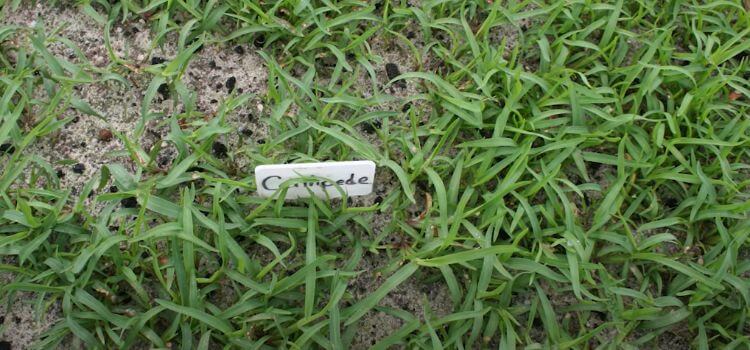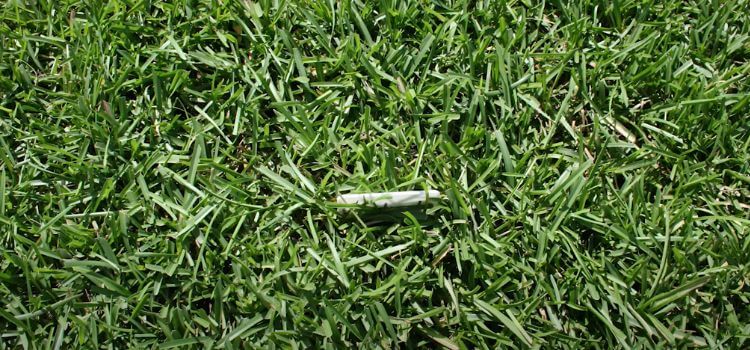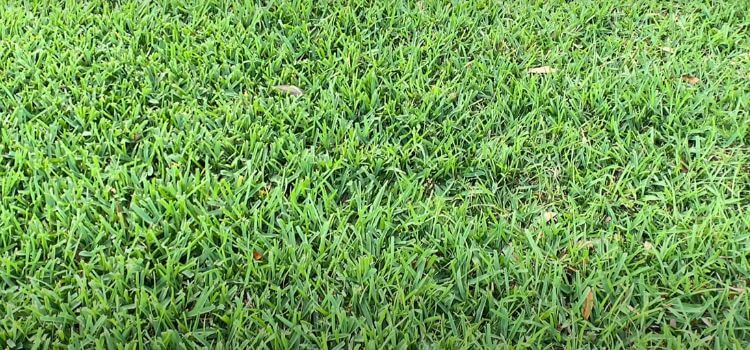As an Amazon Associate, I earn from qualifying purchases.
Centipede grass seed is expensive due to its slow growth rate and meticulous harvesting process. High demand and limited supply also increase its cost.
Centipede grass, a popular lawn choice in warmer climates, is known for its low maintenance requirements and its ability to thrive in poor soil. Yet, homeowners and landscapers often face sticker shock when purchasing centipede grass seed. This warm-season turfgrass requires a specific climate for cultivation, which limits the regions where it can be grown commercially.
The seeds are harvested less frequently because the grass grows slowly, contributing to scarcity and higher prices. Ensuring a lush, green lawn with centipede grass involves an upfront investment, but its durability and low upkeep can offset the initial cost over time. Choosing centipede grass seed is a long-term commitment to quality and sustainability despite the premium price.
Centipede Grass Seed
Centipede Grass Seed is a popular choice for lawns. Yet, its cost often surprises many. This special grass seed has unique traits and needs specific conditions to thrive.
Characteristics
Centipede Grass Seed is known for its excellent features:
- Low maintenance requirements
- Slow growth rate, reducing mowing frequency
- Produces a thick, carpet-like lawn
- Light green colour
- Resilient against pests and diseases
Despite the higher initial investment, the resilience of Centipede Grass Seed against pests and diseases reassures many, making it a top choice for lawns.
Growing Conditions
For optimal growth, Centipede Grass needs specific conditions:
| Condition | Requirement |
|---|---|
| Soil Type | Acidic with pH 5.0 to 6.0 |
| Temperature | Thrives in warm climates |
| Sunlight | Requires full sun to partial shade |
| Water | Needs moderate, consistent watering |
Meeting these conditions ensures the grass grows strong and healthy.

Why Is Centipede Grass Seed So Expensive?
The high cost of centipede grass seed can be explained by examining the factors driving the price. These seeds are more than just specks; they promise lush, green lawns, which is why they can be pricier than one might expect.
Seed Production Challenges
Centipede grass seed production is a challenging feat. It requires specific conditions to thrive. The plant is slow-growing and sensitive to environmental stress. This sensitivity leads to higher production costs. Growers must invest more time and resources to yield a successful crop. Challenges include:
- Strict climate requirements
- Intricate harvesting techniques
- Extended growth periods before harvest
Limited Availability
The market for centipede grass seed is smaller than for other grass types. This limited availability can drive up the cost. A few key factors contribute to its scarcity:
- Lesser-known variety compared to other turfgrasses
- Restricted growing regions
- Lower seed yield per acre
High demand and low supply often lead to a premium price tag. Centipede grass seeds are no exception to this economic principle.
Quality And Purity
When you invest in centipede grass seed, you’re not just buying seeds. You’re choosing top-quality for a lush lawn. Let’s explore why the quality and purity of these seeds matter. And why they set the price high.
Certification Standards
Certification standards ensure you get the best grass seeds. These standards are strict. They check the seed’s quality before it reaches you. Seeds must pass many tests. Only the best seeds get the certified label.
- Germination rate: High germination means more grass.
- Weed-free guarantee: No unwanted plants in your lawn.
- Disease resistance: Your lawn stays healthy.
Purity Testing
Purity testing is a big deal. It tells you how much of the bag is centipede grass seed. You want no fillers or other seeds. Pure seed equals a pure lawn.
| Test | Importance |
|---|---|
| Pure Seed Percentage | Ensures most of the bag is good seed. |
| Inert Matter | Low inert matter means less waste. |
| Other Seeds | Prevents growth of unwanted plants. |
High purity levels make centipede grass seed expensive. Yet, it’s worth it for a perfect green carpet.

Demand And Market
The ‘Demand and Market’ for centipede grass seed tells us why it’s pricey.
Popularity
Centipede grass seed is a top choice for lawns. It’s loved for its low maintenance needs. This grass thrives in warm climates. It creates a lush, green carpet that’s soft underfoot. Its popularity drives up the price. Many homeowners and landscapers seek it for its durability and ease of care.
Regional Variations
Not all places can grow centipede grass. It prefers specific conditions. In areas where it grows well, the demand is high. This makes seeds scarce and expensive.
In the Southeast, centipede grass is a common choice. Here, the seed may be more accessible but still costly. In the North and West, it’s less common, leading to higher prices.
Comparative Analysis
Homeowners and landscapers must embark on a Comparative Analysis of centipede grass seed costs. This grass variety offers unique benefits, but the price often raises questions. How it compares against other seeds is key to determining its true value.
Comparison With Other Grass Seeds
Centipede grass seed is among the pricier options. Here’s a quick rundown:
- Bermuda – Fast growth; requires frequent mowing.
- St. Augustine – Shade tolerant; struggles in the cold.
- Zoysia – Durable; slow to establish.
- Fescue – Cool season; needs more water.
Each grass type has its merits. Yet, the centipede’s minimal maintenance sets it apart.
Cost-benefit Analysis
Centipede grass seed is costly upfront. However, its long-term benefits paint a different picture:
| Aspect | Centipede Grass Seed | Other Grass Seeds |
|---|---|---|
| Maintenance | Low | Variable |
| Fertilization | Less frequent | More frequent |
| Watering | Sporadic | Regular |
| Mowing | Less often | More often |
Investing in centipede grass means fewer resources are spent over time, making it a wise choice for your wallet and your schedule.
Expert Insights
Centipede grass seed stands out in the world of turf. This unique grass type has a reputation for being pricey, but experts in the field offer valuable insights.
Expert Opinions
- High Demand: Centipede grass is popular in warm climates.
- Slow Growth: The grass takes time to mature, limiting supply.
- Production Costs: It’s costly to produce and distribute quality seeds.
Research Findings
Studies reveal specifics about centipede grass pricing.
Tips For Cost-effective Purchase
Are you keen on a lush green lawn without breaking the bank? Centipede grass seed is a premium choice for many gardeners, but its cost can be a hurdle. Fear not, as smart strategies exist to buy this prized seed without splurging.
Bulk Purchase Benefits
Buying in bulk slashes costs significantly. Sellers often offer lower prices per pound when you buy larger quantities. This approach is ideal if you have a spacious area to cover or can team up with neighbors to share the cost. Consider these points:
- Check for minimum order quantities to unlock savings.
- Ensure proper storage to maintain seed quality.
- Divide bulk seed with others for shared cost benefits.
Seasonal Discounts
Timing your purchase can lead to big savings. Seed prices often dip during certain times of the year. Keep an eye out for:
| Season | Discount Potential |
|---|---|
| End of Growing Season | High |
| Winter Months | Medium |
| Spring | Low |

FAQ On Why Is Centipede Grass Seed So Expensive?
Centipede grass requires frequent watering and high soil acidity, which can increase maintenance costs. It struggles in shade and can thin out, making it susceptible to weeds. This grass type also has poor cold tolerance, limiting its use in cooler climates.
Centipede grass can grow from seed, but it is established slowly and requires specific conditions. For quicker results, consider sod or plugs. Ensure soil is fertile and well-drained for best growth.
Grass seed prices have risen due to increased demand, higher production costs, and supply chain disruptions. Climate conditions also affect seed availability, contributing to market fluctuations and pricing.
Centipede grass can reseed itself, but it does so less aggressively than other grass types. For a denser lawn, overseeding may be necessary.
Conclusion
Understanding the cost of centipede grass seed is key for garden enthusiasts. The grass’s price reflects its meticulous cultivation and hardiness. Investing in quality seed ensures a lush, low-maintenance lawn. Remember, with centipede grass, the initial expense pays off in long-term satisfaction and curb appeal.

